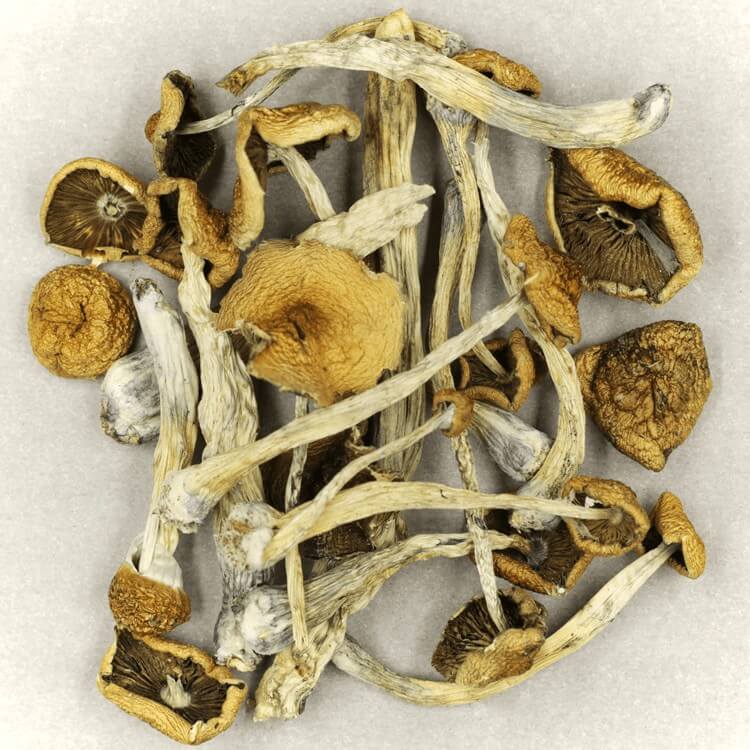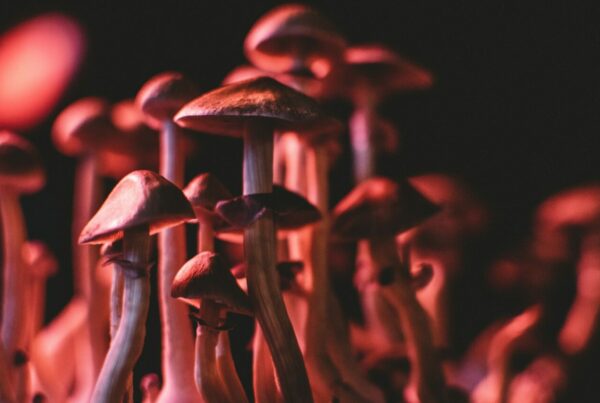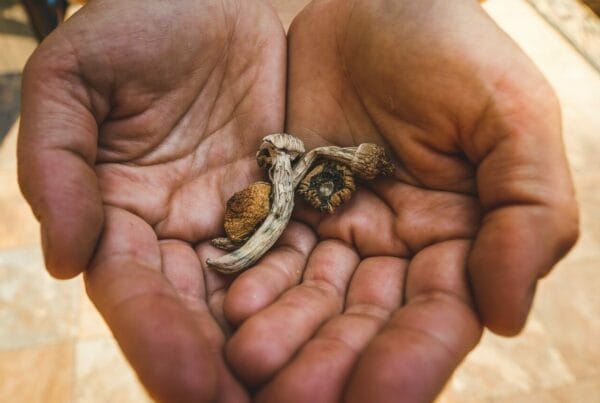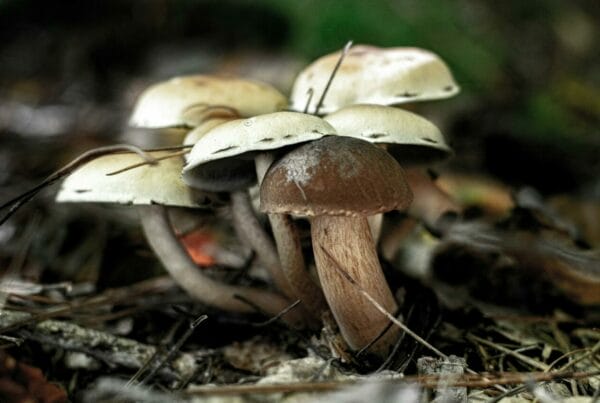Once believed to be fantastical, the strength of Psilocybe mexicana is now recognized, thanks to psilocybin research. Regular revelations about its healing potential are slowly fostering its acceptance in the medical domain. This burgeoning field is deemed promising by experts who tirelessly work to determine safe dosage levels for medicinal application.
Key Takeaways
- Researchers are using innovative techniques like liquid chromatography coupled with tandem mass spectrometry to gauge the potency of mushrooms.
- Clinical trials are underway to evaluate the potential therapeutic applications of Psilocybe Mexicana and other varieties of mushrooms.
- The genetic diversity in magic mushrooms is crucial for creating an accurate dosage guide.
Psychedelic Mushrooms: A Journey from Obscurity to Research Milestones
In the past, Psilocybe Cubensis was known to benefit only a limited number of conditions. However, psilocybin is now making impressive progress in revealing its concealed medicinal attributes.
Scientists are harnessing the potential of Psilocybe Mexicana and other potent strains for extensive research and clinical trials. Regardless of whether the subjects are in vivo or in vitro, this strain is effective in showcasing the true effects and benefits of the fungus species.
Psychedelics Gaining Traction in the Market
Once shrouded in mystery, psychedelics are now being unveiled, and their ongoing advancements and discoveries are increasingly garnering the public’s attention, especially those seeking therapeutic alternatives. Conventional mental health treatments often fail to deliver, leading individuals in search of more dependable options.
Welcome, magic mushrooms.
Individuals grappling with mental health disorders are resorting to psilocybin. It has shown potential in treating conditions like depression, alcohol dependency, anxiety, compulsive behaviors, tics, chronic pain, and more.
Currently, medical professionals are investigating novel methods to accurately determine the ideal dosage for safe administration to patients. Notably, a research team from the University of Texas has designed a model to quantify psilocybin and psilocin concentrations.
The potency of magic mushrooms can be clinically verified.
The Distinct Features of Mexicana
Extensive research has been conducted on Golden Teachers, Blue Meanies, and B-Plus. However, to enhance our knowledge about the safe use of magic mushrooms, it’s crucial to investigate other species as well.
The Mexicana species is now drawing attention among researchers, not solely because it’s one of the earliest species, but also due to its comparatively low potency that may align better with medical drug standards.
Despite Mexicana’s less potent nature compared to other species, it can still produce similar effects as mainstream strains. Therefore, as microdosing gains popularity among patients, this strain becomes a superior choice.
With steady levels of psilocybin and psilocin, similar to other strains, the question arises – why prefer this over other alike strains? Its historical and anthropological significance provides the answer.
Delving into the Rich History of “Mexican”
In ancient times, psilocybe Mexicana naturally occurred in moss. Indigenous communities held these psilocybin mushrooms in high regard, frequently associating them with mystical or supernatural occurrences.
Let’s focus on Mexican mushrooms. More than 2000 years ago, the initial documented use of these mushrooms was by the inhabitants of North and Central America. The Aztecs, a primitive ethnic group, referred to these mushrooms as the “food of the Gods,” or “teonanácatl” in their native tongue.
If the Aztecs were present today, they would testify to the transformative, emotionally potent, and mentally balancing effects of Mexicana, even though they might not comprehend these modern terms.
No matter the cultivation method, this mushroom has successfully preserved its natural psilocybin concentrations, a testament to its authenticity. Such authenticity is a standard highly prized by researchers and psychedelic research institutions.
Innovative Approaches for Testing Psilocybin Content and Potency
A team of ten researchers from the University of Texas at Arlington and other research institutions have introduced a new method to test the potency of psychoactive compounds in mushrooms. This novel approach incorporates liquid chromatography and tandem mass spectrometry.
Here are two pioneering techniques:
- Liquid chromatography is a technique that isolates and examines chemical compounds. In this context, it’s employed to analyze the active chemicals in mushrooms. The process entails circulating a liquid sample through a column filled with a solid material (the stationary phase). Various chemicals in the sample interact differently with the stationary and mobile phases, leading to their separation at differing speeds as they traverse the column.
- Spectrometry typically investigates the interaction between matter and electromagnetic radiation across a broad range of wavelengths. It identifies and quantifies substances based on the specific wavelengths of light that molecules absorb and scatter, permitting the analysis of the electronic, vibrational, and rotational states of the chemical.
This methodology was employed to five strains of magic mushrooms. The researchers found that the average total levels of psilocybin and psilocin across these strains varied from 0.879 to 1.36. These concentrations outperformed many strains, such as Bull Run and Cambodian. They confirmed the precision of their study by juxtaposing their findings with those from other independent laboratories.
The congruity of results between the two labs further reinforced the reliability of their testing process to accurately determine the potency of the mushrooms.
If validated by experts, this could usher in a new suite of techniques into the existing psychedelic potency testing methods, acting as an extra safety measure to avoid inaccurate dosage calculations.
Expanding Research to Encompass Other Species
Extending research to other species is advantageous. It can augment our comprehension of the health benefits linked to different strains and provide fundamental data on the effects of less potent mushrooms.
Moreover, it can assist in enlightening individuals about the influence of varied dosages on the psychedelic experience. By contrasting Mexicans with stronger strains like Psilocybe Cubensis, researchers can ascertain how differing concentrations of active compounds can impact therapeutic results.
For example, the Blue Meanies strain induces more potent hallucinogenic effects, which could potentially be effective in treating conditions like depression. On the other hand, the latter is more suitable for microdosing or less intense applications such as mood enhancement or focus improvement.
Diverse Genetics Facilitate Safer Treatments
The fact that different cultivars or varieties boast unique genetic profiles and differ in potency, chemical composition, and effects. This diversity allows healthcare professionals to select the most suitable kind for specific medical applications and adjust doses according to individual requirements, thereby minimizing potential risks and maximizing benefits.
Take for instance, Psilocybe Semilanceata (Liberty Caps) or Psilocybe cyanescens. These possess unique alkaloid profiles that could be beneficial in managing anxiety. On the other hand, other synthetically grown mushrooms may be more suitable for addressing substance addiction or compulsive behavior. This diversity aids in designing personalized treatments with enhanced safety and efficacy.
From this, we can infer that the genetic diversity in psychedelic mushrooms, along with new methods of potency assessment and identification, is vital for crafting safer medical treatments.
Enhanced Safety in Medical Applications
Let’s pause to consider the potential benefits of safer dosage.
- Decreased risk of overdose: With accurate dosing, users can avoid the danger of overdosing. This also means that product labels should be more straightforward to prevent consumer misunderstanding.
- Better predictability: Users can foresee the effects or experiences they might encounter during their trips with more precise dosing. This can reduce overwhelming sensations and anxiety, thus improving patient satisfaction.
- Standardized measurement: In one way or another, dosing accuracy can foster a standard metric that allows individuals to refer to charts for potential effects easily.
Experience Accurately-dosed Mushrooms through Advanced Potency Tests | Buy Magic Mushrooms Online at Mushroom Dispensary Canada
If these two groundbreaking techniques continue, you’ll evade unanticipated effects. Pair this with smart online shopping at Mushroom Dispensary Canada. We offer dried mushrooms that ensure a calm, relaxing psychedelic journey without excessive psychoactivity. Purchase psychedelics online in Canada via Mushroom Dispensary Canada.
Frequently Asked Questions
Is Mexico Psilocybe Mexicana similar to the Big Are Big Mexicans and Psilocybe Cubensis identical?
No, Big Mexicans and Psilocybe Cubensis are separate strains of mushrooms, so it’s crucial not to confuse them. Big Mexicans contain a higher compound concentration, ranging from 0.5% to 1%, making them significantly more potent.
Psilocybe Zapotecorum often has a bell-shaped cap, contrasting the conical shape commonly seen in Psilocybe Cubensis. Remember, these two types of mushrooms not only differ in appearance but also in their effects.
What is the maximum potency of Mexican mushrooms?
The concentrations of psilocybin and psilocin in Mexican mushrooms can peak at 0.25%. While this potency is relatively low, comparable to the Golden Teacher variety, it can still induce profound psychedelic experiences that may have health benefits.
What is the recommended safe dosage?
Commonly, a dosage from 1 to 2 grams is suggested. However, this recommendation can fluctuate based on various factors such as the method of consumption, individual metabolic rate, and the unique potency of the mushroom strain. Some individuals opt to take lower doses, from 0.05 (50mg) to 0.025 grams (250mg), to mitigate the psychedelic effects.





